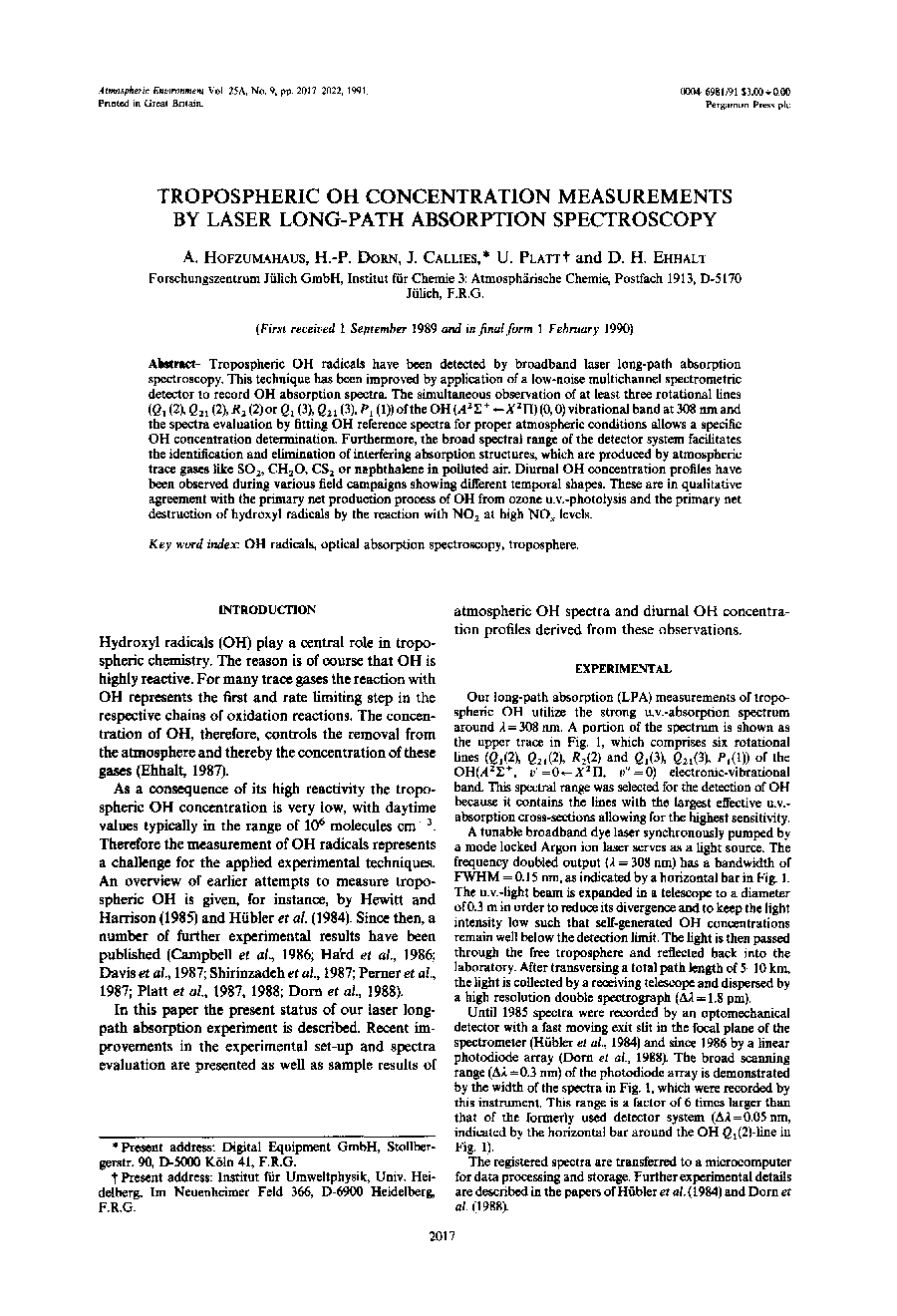| Article ID | Journal | Published Year | Pages | File Type |
|---|---|---|---|---|
| 4476066 | Atmospheric Environment. Part A. General Topics | 2017 | 6 Pages |
Abstract
Tropospheric OH radicals have been detected by broadband laser long-path absorption spectroscopy. This technique has been improved by application of a low-noise multichannel spectrometric detector to record OH absorption spectra. The simulataneous observation of at least three rotational lines (Q1 (2), Q21 (2), R2 (2) or Q1 (3), Q21 (3), P1 (1)) of the OH (A2Σ+ â X2Î ) (0,0) vibrational band at 308 nm and the spectra evaluation by fitting OH reference spectra for proper atmospheric conditions allows a specific OH concentration determination. Furthermore, the broad spectral range of the detector system facilitates the identification and elimination of interfering absorption structures, which are produced by atmospheric trace gases like SO2, CH2O, CS2 or naphthalene in polluted air. Diurnal OH concentration profiles have been observed during various field campaigns showing different temporal shapes. These are in qualitative agreement with the primary net production process of OH from ozone u.v.-photolysis and the primary net destruction of hydroxyl radicals by the reaction with NO2 at high NOx levels.
Related Topics
Physical Sciences and Engineering
Earth and Planetary Sciences
Atmospheric Science
Authors
A Hofzumahaus, H.-P Dorn, J Callies, U Platt, D.H Ehhalt,
